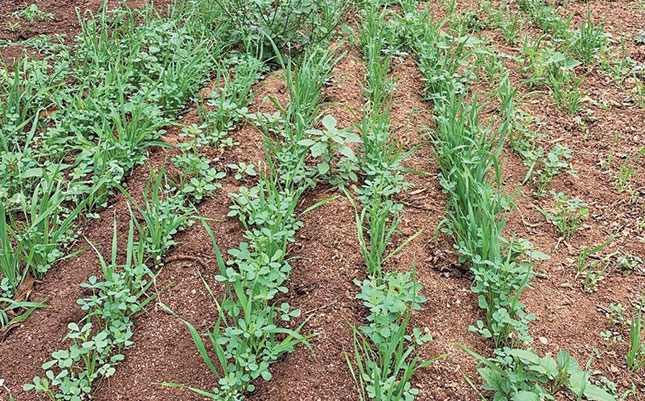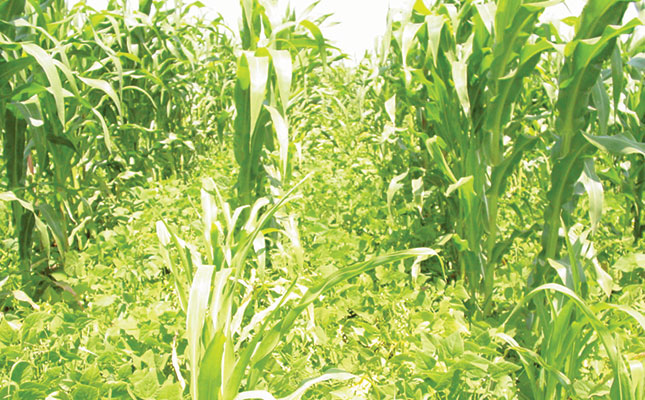Pressure is mounting on farmers to reduce their chemical applications on crops. Subtropical crops such as avocados, macadamias and citrus are especially vulnerable to changing legislation, as they are dependent on export markets.
Most notably, the EU, where much of these crops are marketed, has called for a 50% reduction in pesticide use by 2030.
To maintain market access, producers need to increasingly incorporate integrated pest management (IPM) strategies, which focus more on the natural control of pests.
Schalk Schoeman, research extension manager at Macadamias South Africa (SAMAC), says that farmers need to start planning for a future where crop protection chemicals are not part of the picture.
“All broad-spectrum products or those that have an effect on bees will be out. Much of what we currently use for stink bug control falls into this category, as do products like imidacloprid, which is used to control thrips on citrus and macadamias.
“At this stage, it will be very difficult for the macadamia industry to comply with a 50% reduction in pesticide. Making changes now in the way we control pests is crucial to ensure that when we reach 2030, we already have effective, sustainable and compliant methods in place.”
While IPM strategies take into account a host of practices that ultimately reduce chemical pest control, cover crops are emerging as important for subtropical crops. Elsje Joubert, owner of the Centre of Excellence, notes the importance of cover crops in preventing a build-up of pests and luring them away from the crop into surrounding vegetation.
“Insects like the yellow- edged stink bug prefer other crops to macadamias, but if all other plants in the orchards and surrounding environment have been eliminated, you leave them no choice than to feed on your macadamias.
“The larvae of thrips feed on soft, green material. In November, when there are many racemes with flowers and small fruit, they have the ideal diet, unless you provide them with soft green food in a cover crops area to feed on. This is an especially useful tool, because at this early stage in the season you don’t want to spray organophosphates and pyrethroids, as you’ll need them later at a more crucial time in the season. If you overspray now, [the pests will] build up resistance towards these chemicals.”
Joubert notes that the aim is not to have an orchard completely free of insects and diseases, but to keep them at a level where they are not considered a plague and harmful to the crop.
A healthier soil and a thriving orchard
A further benefit of cover crops is the overall strengthening of the orchard’s health, which means that the trees are better equipped to withstand pests. An ideal orchard will attract fewer harmful insects and more parasitoids, have better-quality fruit and higher yields, exhibit more biodiversity and have more soil carbon.
A quality crop depends on healthy trees and soil. To a large extent, these can be achieved through the mulch created by cover crops, as they aid in building and feeding beneficial microbes in the soil.
Since active carbon is an indicator of the organic matter that can serve as a readily available food and energy source for the soil’s microbial community, the cover crops help to maintain a healthy soil food web, making nutrients in the soil available to the plant.
Joubert explains that activated carbon makes a big difference to the health of the orchard.
“When you have a mass of green plants that are photosynthesising, they take carbon out of the atmosphere and use it to produce sugars and nutrients in the soil for the trees to absorb.
“The sun is your biggest enemy when it comes to losing carbon. We need to focus on farming roots, because if the tree can’t feed, it will die. Weak roots result in trees that are more susceptible to pests. If the trees are strong enough to withstand an attack, there’s less chance of insects getting to the point where they are considered a pest.
“The goal is therefore to cover your soil so that you have enough green matter to slash or roll into mulch, which will aid orchard health. So when you’re measuring your return on investment, you don’t look at how much money you’ve earned from the seed you sowed, but rather how much coverage you’ve gained.”
Taking cost versus gain into account, it is important to note the benefit of cover crops in preventing erosion and ensuring that moisture is maintained in the soil for longer periods. Planting cover crops also means there is less chance of invasive and unwanted weeds taking over an orchard, which in turn reduces the need to apply herbicides.
The right mix
Freddie Steyn, an agent for Barenbrug, which specialises in cover crops, advises farmers to first establish their budget, climate, soil type and reasons for planting cover crops in order to select the right mix of crops.
“If you’re not using irrigation for the cover crops, sow the seed during the rainy season, otherwise the plants will emerge and then die. You should also consider terminating the crop, as many workers are reluctant to go into orchards where the grass is high and there’s an increased prevalence of snakes. It’s also impractical to harvest when the crops are too tall.
“If the cover crops need to be reduced, various methods can be considered, depending on what crops have been planted and what you have at your disposal. Livestock can be used to graze the cover crops, a roller-crimper can be used to flatten them, or they can be slashed and disced into the soil. The roller-crimper can also be used in conjunction with a no-till planter to flatten the summer crop and plant a winter crop simultaneously.”
The seed mix should include a combination of crops that provide good soil coverage and green matter, as well as legumes, which fix nitrogen. There is also a vast variety of crops that attract parasitoids, beneficial insects, and those that repel pests (see box).
Plant-parasitic nematodes
Cover crops can be used to manage and control plant-parasitic nematodes in the soil. Mieke Daneel, a senior researcher at the Agricultural Research Council, explains that nematodes struggle to find a suitable host when there is a variety of plants in the soil. This prevents them from completing their life cycle.

Plant-parasitic nematodes feed on plant roots and the lower parts of the stem. These damaged roots are less able to absorb much-needed water and nutrients, leading to average crop losses of 15% to 20%.
Signs of infestation include less vigour, patchy distribution, yellowing, wilting, slow growth, and more susceptibility to disease. Daneel adds that nematodes and Phytophthora generally go hand in hand, as the nematodes make a hole in the root through which the Phytophthora can enter.
Match cover crop with nematode
Steyn notes that a diverse mix of cover crops also stimulates a more diverse microbial population due to different microbes being present on the roots of different cover crop species.
“This diversity then increases the chances of the beneficial population competing with the plant-parasitic nematodes, and some of it even directly feeding on pathogens. If you have a monoculture, the chances of one species dominating are much greater.”
Daneel therefore advises a mixture of cover crops, rather than just one.
“You need to break the cycle of the nematodes by destroying their hosts. This won’t happen in one season; it takes years, but you start seeing results quite quickly. Effective nematode control requires matching the right cover crop with the particular nematode species. Farmers first need to identify the specific nematodes in their fields, or risk choosing a cover crop that will be a poor or non-host for the pest.”
Daneel suggests marigold, chicory, safflowers, brassicas, brown mustard and wizard oats, which she says generally work well to control nematodes.
“Brown mustard, for example, produces volatile compounds that disturb the nematodes.”
Steyn says the success of cover crops in controlling nematodes depends on the following factors:
- The plant material should be finely chopped and cultivated into the soil. The material will then start decomposing and will eventually release biofumigation gases.
- It should be washed in with water, either via irrigation or rain. This will effectively transfer the gases into the soil and seal the surface.
- The pH of the soil should be corrected.
| Functional cover cropsDifferent cover crops offer different benefits to their environment. By selecting the right mix, farmers can reduce costs on pesticides, herbicides, compost, irrigation and fertilisers.
Nitrogen fixers
Plants that attract beneficial and predatory insects
Beneficial insects and their prey
Source: Centre for Excellence |
Different cover crops offer different benefits to their environment. By selecting the right mix, farmers can reduce costs on pesticides, herbicides, compost, irrigation and fertilisers.
Nitrogen fixers
Sunn hemp;
Cowpeas;
Red clover;
Brown mustard;
Sweet clover (also good at extracting potassium, phosphorus and other soil nutrients from insoluble minerals); and
Common yarrow (builds organic matter and suppresses weeds).
PLANTS THAT Attract beneficial and predatory insects
Phacelia (aids pollination as it is nectar-rich and attracts bees);
Coriander;
Dill;
Buckwheat (builds organic matter);
Caraway;
Common yarrow;
Cosmos;
Spike speedwell;
Marigold; and
Fennel.
Beneficial insects and their prey
Lacewings feed on aphids and certain mite species.
Ladybugs feed on aphids, insect larvae and eggs.
Hoverflies feed on aphids and mealybugs.
Parasitic wasps feed on stink bug eggs, leaf miner, pupae and caterpillars.
Tachinid flies feed on stink bugs, caterpillars and beetle larvae.
Minute pirate bugs feed on aphids, thrips and scale insects.
Damsel bugs feed on aphids, leafhoppers and small caterpillars.
Big-eyed bugs feed on insect eggs and leafhoppers.
Source: Centre for Excellence



